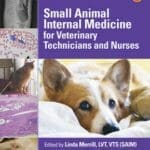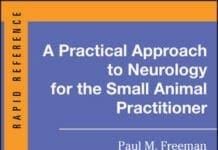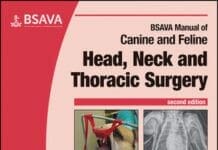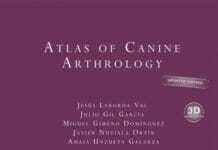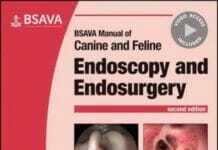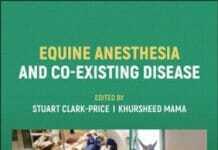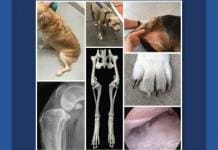The Practice of Veterinary Anesthesia: Small Animals, Birds, Fish and Reptiles

By Donald Sawyer
The Practice of Veterinary Anesthesia: Small Animals, Birds, Fish and Reptiles PDF provides practitioners with a practical guide to anesthesia that is easy to use in the office setting. It is organized with the busy practitioner in mind, and in the sequence that anesthesia is performed. The presentation includes step –by- step protocols for restraint, anesthesia and patient monitoring along with over 50 well designed tables covering drugs, complications and specific diseases conditions. This helpful tool can assist practitioners in problem solving the factors that place some patients at higher risk for anesthesia. Veterinarians will enjoy the convenient, very accessible drug protocol tables which refer to drugs by their generic /brand name along with information about availability in North America, Europe, and the UK. This practical, concise guide to small animal and small exotic anesthesia for the non-specialist is an indispensible resource for the busy practitioner.
Published by Teton New Media in the USA and distributed by CRC Press outside of North America.
Read more: Analgesia and Anesthesia for the Ill or Injured Dog and Cat
Table of Contents
Chapter 1 The Preanesthetic Period
General Considerations
Physical Status
Classification of Risk Status
Patient Evaluation
Risk Assessment of the Injured Patient
Hospitalization
Pain Management: It starts before anesthesia!
Preanesthetic Medication
Tranquilizers
Alpha2 Adrenergic Receptor Agonists
Receptor Antagonists
Neuroleptanalgesia and Neuroleptanesthesia
Pentobarbital as Premedication
Nonsteroidal Anti-inflammatory Drugs
Pain Management from a Surgeon’s Perspective
Chapter 2 The Induction Period
Equipment
Placement Technique
Methods of Induction
Laryngoscopy and Endotracheal Intubation
Chapter 3 The Anesthetic Period
Anesthetic Machines
Breathing Systems
Systems
Assessment of Anesthetic Systems
Protocol for Machine Check Pre-Anesthesia
Cleaning and Maintenance
Flow Rates for Circle Anesthetic Systems
Scavenging Systems for Waste Anesthetic Gases
Occupational Exposure to Waste Anesthetic Gases
Hazards of Anesthetic Machines
General Principles of Inhalation Anesthesia
Minimum Alveolar Concentration (MAC)
Metabolism of Inhalation Anesthetics
Characteristics of Inhalation Anesthetics
Mechanical Ventilators for Small Animal Patients
Agents
Reactivity, Stability and Flammability
Chapter 4 The Anesthetic Period: Maintenance
The Anesthetic Record
Procedures Following Induction and Intubation
Perioperative Monitoring of the Anesthetized Patient
Fluid Therapy
Blood Gases and Acid-Base Relationships
Chapter 5 The Anesthetic Period: Predictable Problems
Standard Surgical Anesthetic Procedures
Shock Patient and High Risk Anesthesia
Balanced Anesthesia
Muscle Relaxation
Modifications for Breeds
Modifications for Specific Procedures
Modifications for Specific Conditions
Chapter 6 The Anesthetic Period: Other Small Animals
Birds
Guinea Pig, Hamster, Rat, Mouse, Gerbil
Rabbits
Non-Domestic Carnivores
Anesthesia of Freshwater and Saltwater Fishes
Anesthesia and Analgesia of Reptiles
Chapter 7 The “Nobody Wins” Period: Cardiac Arrest and Resuscitation
Cardiac Emergency
Recognition
Resuscitation
Crash Cart or Box
Assessment
Chapter 8 The Recovery Period
Pain Management
Anesthesia Recovery
Recovery Procedures
Complications
Summary
Index








